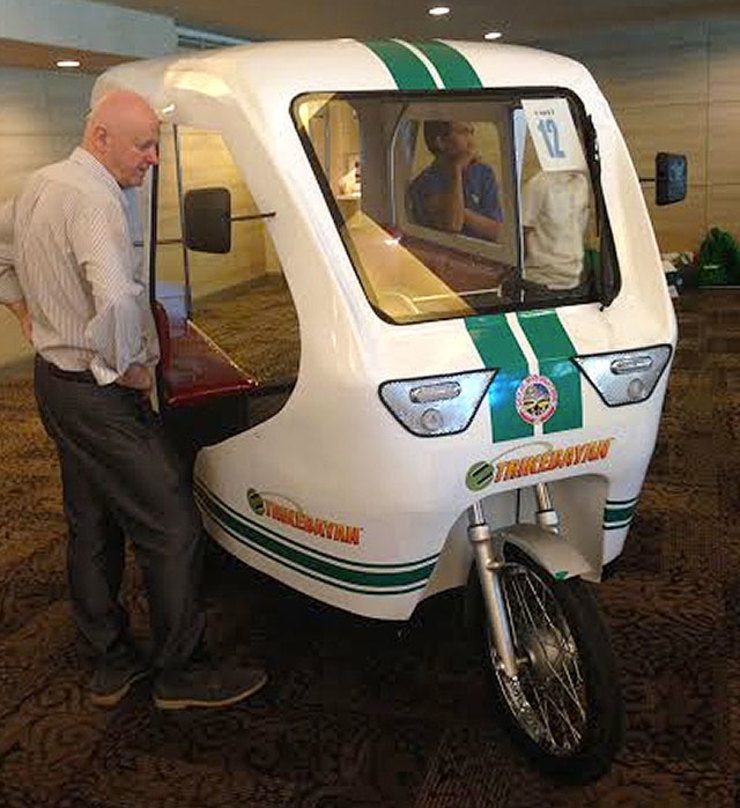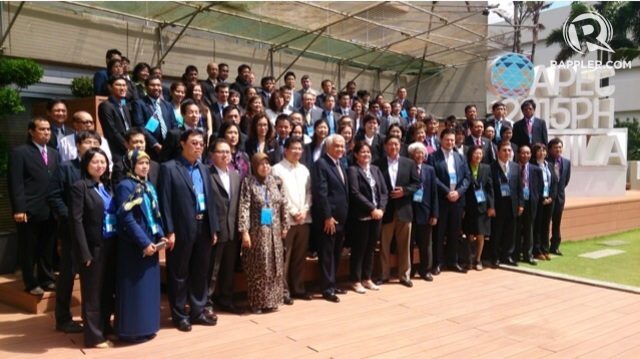SUMMARY
This is AI generated summarization, which may have errors. For context, always refer to the full article.

MANILA, Philippines – With or without incentives, it’s a go for the electric vehicles (e-vehicles) road map launch in the third quarter of 2015, Electric Vehicle Association of the Philippines (EVAP) President Rommel Juan said.
Speaking at the sidelines of the Asia-Pacific Economic Cooperation (APEC) 22nd automotive dialogue meeting Thursday, April 23, Juan said the road map they initially crafted in 2012 is “complicated” and thus required “fine tuning.”
“The Electric Vehicle Industry Growth Agenda, 2013 through 2021” stated that e-vehicles are the practical, alternative solution to fuel problems affecting environmental degradation.
The road map also sought to address e-vehicle makers’ concerns over technology, safety, and prohibitive costs.
The EVAP road map initially targeted a 3-phase implementation: the first phase from 2013 to 2015; second phase from 2016 to 2018; and the final phase from 2019 to 2021.
In February during the 4th Philippines e-vehicles summit, Juan said EVAP is optimistic it would nail its target of 1 million e-vehicles on the road by 2020.
Although he admitted the association is still far from its target, it is not discouraging them since EVAP is reaching it at a faster rate and with greater intensity.
EVAP also forecasting 23,500 e-vehicles to be sold in 2015 – 20,000 e-bicycles and e-motorcycles; 3,000 e-tricycles; and 500 e-jeepneys. It also projected to end 2015 with about 40,000 EVs on Philippine roads.
Delays
Far from target and the road map delayed, what lies ahead for the e-vehicles industry in the Philippines?
Juan enumerated the reasons that hindered the launch of the road map as earlier planned.
For instance, EVAP is pushing for the Alternative Fuel Vehicle bill, championed by Senator Bam Aquino and Representative Mark Villar to give incentives for e-vehicle manufacturers and dealers.
“A lot of the incentives we’re asking for are hinged on the Alternative Fuel Vehicle Bill so we’re still pushing for it,” Juan said.
The delayed launching of the e-tricycle project also contributed to the deferral of the road map, he added.

In March 2014, the Department of Budget and Management released P505.6 million ($11.44 million) to put 100,000 electric tricycles or e-trikes on Philippine roads by 2017. The funds cover the government’s 2014 financial commitment for the e-trike project.
The e-trike project is a joint initiative with the Asian Development Bank (ADB) through its Clean Technology Fund. The entire project has a total cost of P21.7 billion ($490.83 million). The government will contribute P4.26 billion ($96.36 million) and the balance will be funded by P17.2 billion ($389.05 million) in loans and P216 million ($4.89 million) in grants.
“We were banking on the ADB e-trike project and it was delayed. Now, it’s for rebidding,” Juan said. The Department of Energy moved the bid submission deadline of the project from April 14 to Wednesday, May 6, 2015.
The e-jeepneys, meanwhile, are now starting to gain ground, and EVAP is waiting for the Land Transportation Office’s 15-year age limit rule on jeepneys and buses to fully take effect.
“We have like 70,000 (regular) jeepneys in Metro Manila. The average age of the engine is 20 years, but the jeepney body’s average age is 30 to 40 years old. So we really need to replace them. If we can do it, the demand for e-jeepneys will spike,” Juan said.
Green light
Even if these delays are not resolved right away, Juan said the road map is still happening.
“We still need to tweak the road map, but we’re definitely launching it within the year, with or without the incentives,” Juan said.
Juan said some of the incentives they earlier asked might be too steep that other government agencies concerned might have a hard time approving them.
Among the “steep” incentives include a 9-year income tax holiday and value added tax (VAT) exemption.
“We’ll instead try to push for incentives on parts importation. If we push for local manufacturing, we have to push for duty-free and tax-free incentives on completely knocked down (CKD) parts,” Juan said. Items shipped in CKD or disassembled form have lower freight charges versus completely built up (CBU) vehicles.
Baby steps

Part of fast tracking the delayed e-vehicles road map is the industry effort to benchmark with other countries in terms of best practices and incentives – thus the APEC automotive dialogue is serving as a good venue for such purpose. (READ: APEC dialogue focuses on vehicles, SME integration)
For example, China is the most incentivized e-vehicle industry as the government gives as high as $10,000 subsidy for those who buy a new e-vehicle, Juan said. In Turkey, e-taxis are not charged a large franchise fee by the government, he added.
Those incentives are really attractive, Juan said, but for e-vehicles to take flight in the Philippines, EVAP is settling for non-fiscal incentives for the time being.
Apart from duty-free or tax-free incentives on parts’ importation, EVAP is pushing for non-fiscal incentives like number coding exemption for e-vehicles; a “green lane” in LTO for faster registration – or waived registration fee from LTO; free parking spaces in establishments like malls for e-vehicles, among related incentives, Juan said.
Learning “best practices” from APEC member countries on their e-vehicles industry is also among Juan’s target achievements from the dialogue.
“We want the Philippines to be the ‘e-vehicles hub of Asia.’ We have the ‘perfect storm’ here because the country’s public transportation needs to be modernized,” Juan said. (READ: Remember the Love Bus? Might be time to have it back)
He added that foreign players are also recognizing the potentials of e-vehicles in the country, thus they are investing in the young yet bullish industry. (READ: 11 things you may not know about electric vehicles)
Immediately after the APEC automotive dialogue meeting, which is ending Friday, April 24, Juan said EVAP will reconnect with the Board of Investments to finalize the road map.
Asked how the e-vehicle road map fares with the also delayed Philippine automotive industry road map, Juan said the e-vehicles industry is independent and is focused on the public transportation sector, thus making its road map complementary.
The Department of Trade and Industry estimated in October 2014 that the automotive roadmap will be issued in 2015, implemented by 2016, and its impact felt by 2017, as planning by automotive companies is seen to take a year-and-a-half from the issuance of the roadmap. (READ: PH to save $17B in forex by producing vehicles locally)
“All the big car companies have their own e-vehicles as well. Once they start something from the ground, definitely they will benefit also,” Juan said. – Rappler.com
$1 = P44.26
Add a comment
How does this make you feel?
There are no comments yet. Add your comment to start the conversation.